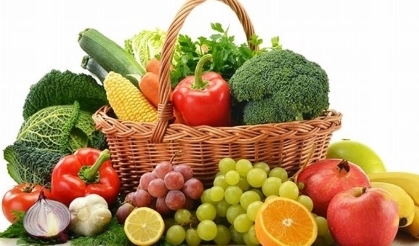Vietnam’s fruit and vegetable exports to the EU increased by 58% in the first nine months of 2025
Tuesday, November 25,2025
AsemconnectVietnam - According to data from the Vietnam Customs, in the first nine months of 2025, Vietnam’s fruit and vegetable exports to the EU reached USD364.85 million, up 58.15% year-on-year. This strong growth reflects Vietnam’s effective utilization of tariff preferences and improved market access conditions under the EVFTA, especially for agricultural products such as fruits and vegetables.
In September 2025 alone, exports to EVFTA member markets reached USD36.61 million, down 19.49% month-on-month but still surging 130.14% compared to the same period in 2024. Although monthly export value showed a slight correction after several months of expansion, the results remain positive, reaffirming the strong upward trend of Vietnam’s fruit and vegetable shipments to the EU market.
Despite the EU being a demanding market with stringent requirements on quality and food safety, the share of Vietnam’s fruit and vegetable exports to this market improved significantly. Specifically, the share rose to 5.95% of Vietnam’s total fruit and vegetable exports in the first nine months of 2025, compared with 4.09% in the same period of 2024. This demonstrates not only Vietnamese enterprises’ efforts to expand market reach but also their increasing ability to meet strict EU requirements on traceability, environmental standards, and quality certification.
Export performance by key EVFTA markets
The Netherlands was the largest destination and serves as an essential gateway for distributing Vietnamese fruit and vegetable products across Europe. Exports to the Netherlands reached USD13.15 million in September 2025, down 10.92% from the previous month but still up 139.36% year-on-year. Cumulatively in the first nine months, exports reached USD123.36 million, rising 45.12% year-on-year and accounting for 33.81% of Vietnam’s total exports to EVFTA markets. However, this share decreased from 36.85% a year earlier, indicating a gradual diversification of export markets.
Germany was the second-largest market. Exports in September 2025 reached USD6.11 million, down 24.31% month-on-month but increasing sharply by 197.41% year-on-year. In the first nine months, exports to Germany totaled USD61.18 million, up 39.62% year-on-year and representing 16.77% of total exports to EVFTA markets. Although this share declined from 18.99% in the previous year, strong growth reflects robust demand—particularly for processed, dried, and organic products.
France ranked third, with export value in September 2025 reaching USD4 million, down 10.27% from the previous month but up 54.64% year-on-year. For the first nine months of 2025, exports reached USD42.45 million, increasing 39.74% year-on-year and accounting for 11.63% of total exports to EVFTA markets. Despite the share declining from 13.17% last year, France remains an important market due to its strong demand for tropical fruits such as mango, dragon fruit, and rambutan—Vietnam’s key strengths.
Overall, Vietnam’s fruit and vegetable exports to EVFTA members maintained impressive growth in the first nine months of 2025. This reflects sustained efforts by exporters to improve product quality, expand certified growing areas, and invest in processing and preservation technologies. While challenges remain—such as technical barriers, strict food safety standards, and logistics constraints—the strong growth trajectory highlights substantial opportunities for Vietnam’s fruit and vegetable sector in the EU market in the coming period.
Product structure of Vietnam’s fruit and vegetable exports to the EU
According to Vietnam Customs statistics, Vietnam’s fruit and vegetable export structure to the EU in the first nine months of 2025 shows notable shifts, with increasing shares of higher-value-added product groups.
Processed fruits and vegetables – the leading export category
The most remarkable development is that processed fruits and vegetables have emerged as the leading export category to the EU for the first time this year. In September 2025, exports of this group reached USD19.72 million, down 19.72% month-on-month but still soaring 187.97% year-on-year.
In the first nine months of 2025, processed fruit and vegetable exports totaled USD173.72 million, up 66.27% year-on-year and accounting for 47.61% of Vietnam’s total fruit and vegetable exports to the EU—higher than the 45.29% share in the same period of 2024. Compared with the first eight months, this share has increased, surpassing that of the fruit and nut group, indicating a clear shift from exporting raw products to exporting deeply processed items in line with the strategy to enhance value-added in agricultural exports.
Fruits and nuts – stable growth and second-largest share
The second-largest category is fruits and nuts. Export value in September 2025 reached USD14.63 million, down 20.2% month-on-month but still rising 94.2% year-on-year. Cumulatively in the first nine months, exports reached USD169.05 million, up 54.26% year-on-year and accounting for 46.33% of total exports to the EU, though slightly down from 47.5% in the same period of 2024. Despite losing the top position to processed products, fruits and nuts remain central in the export structure thanks to Vietnam’s natural advantages and improving production capacity.
Vegetables – small scale but positive outlook
Ranking third is the vegetable group, which, despite its smaller scale, shows positive growth signs. In September 2025, vegetable exports reached USD1.38 million, down 16.33% month-on-month but up 30.18% year-on-year. In the first nine months, exports totaled USD12.58 million, up 6.33% year-on-year, accounting for 3.45% of total fruit and vegetable exports to the EU—lower than 5.13% a year earlier.
Although the share declined, the modest growth in value indicates that demand for Vietnamese vegetables in the EU remains steady, particularly for organic products and those with clear traceability.
Overall, Vietnam’s fruit and vegetable export structure to the EU in the first nine months of 2025 reflects a positive trend, with the processed product group growing strongly and contributing nearly half of total export value. The combined share of processed fruits and vegetables and the fruits and nuts group reached 93.94%, showing a strong concentration on these two core product categories. This trend highlights Vietnamese enterprises’ growing focus on value-added products and the effective utilization of Vietnam’s strengths in tropical fruit production.
However, fresh vegetables continue to account for a small proportion—only 3.45%—due to strict EU technical standards, pesticide residue limits, traceability requirements, and cold-chain logistics challenges. Long transit times, high logistics costs, and limited post-harvest preservation capacity further reduce the competitiveness of fresh vegetables compared with suppliers closer to the EU such as Europe, North Africa, or the Middle East.
Outlook
In the coming period, Vietnam’s fruit and vegetable exports to the EU market are expected to maintain a positive growth trajectory, supported by a combination of favorable domestic and international factors. First, the EVFTA continues to serve as a strong catalyst, enhancing the competitiveness of Vietnamese fruit and vegetable products compared with suppliers outside the bloc that face higher tariff rates. The elimination of tariffs on many product lines has facilitated deeper market penetration for Vietnam’s key products such as dragon fruit, mango, pineapple, banana, passion fruit, rambutan, durian, and cashew nuts into major distribution systems in Germany, the Netherlands, France, and Belgium—important import and re-export hubs in the region.
In addition, the rising trend of green consumption and healthy lifestyles in Europe is creating significant opportunities for Vietnamese fruit and vegetable products, particularly organic, deeply processed, or sustainably certified items. Many domestic enterprises have begun investing heavily in GlobalG.A.P-certified growing areas and adopting advanced cold storage and processing technologies to extend shelf life and increase value-added. This will form an essential foundation for Vietnam to expand its market share, especially as European consumers increasingly prioritize clear origin, transparent traceability, and high-quality standards.
T.Huong
Source: Vitic
China and US led in supplying of fruits and vegetables to Vietnam
EU goods exports to Vietnam increased by nearly 5% in the first nine months of 2025
Vietnam's goods exports to the EU have increased sharply in the first 9 months of the year thanks to EVFTA
Export of fruits and vegetables maintained an upward trend, aiming for the 8.5 billion USD mark in 2025
Vietnam affirms its position as the world's leading rice exporter
Pangasius exports in October rebound
Exports to Germany grow in 10 months of 2025
APEC arbitration centre debuts office in Da Nang
Hue City: Exports continue to grow by double digits
Vietnam's coffee exports to the EU have increased sharply thanks to EVFTA in the first 9 months of 2025
10 months of 2025, the whole country has a trade surplus of 19.56 billion USD
Fresh coconut industry growth slows down, warning of market risks
Vietnam's seafood exports reached 9.5 billion USD in 10 months of 2025
Exports to India grew in 10 months of 2025

Plan of Hai Duong province for a period of 2021 - 2030, ...
Organize space reasonably and harmoniously, focusing on connecting Hai Duong in common development space, actively contributing to the ...Plan of Hau Giang province in a period of 2021 - 2030, ...
Sustainable forestry development program in a period of ...

LION Championship 25 to feature title showdowns in Khanh ...
LION Championship 25 will take place at Cam Ranh Square in south-central Khanh Hoa province, at 20:00 on August 16, featuring two of the ...Bai Dinh Pagoda named outstanding destination with ...
Party chief attends special political–art programme “Under ...



